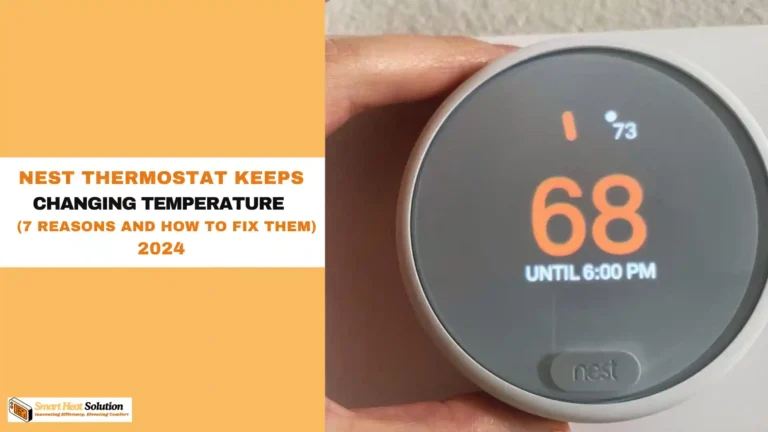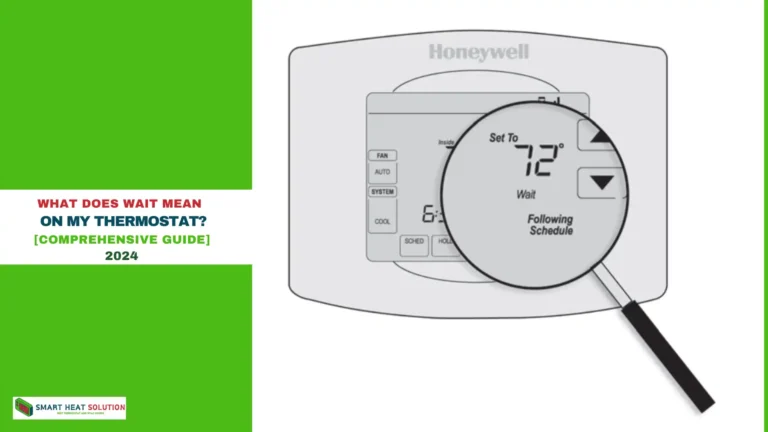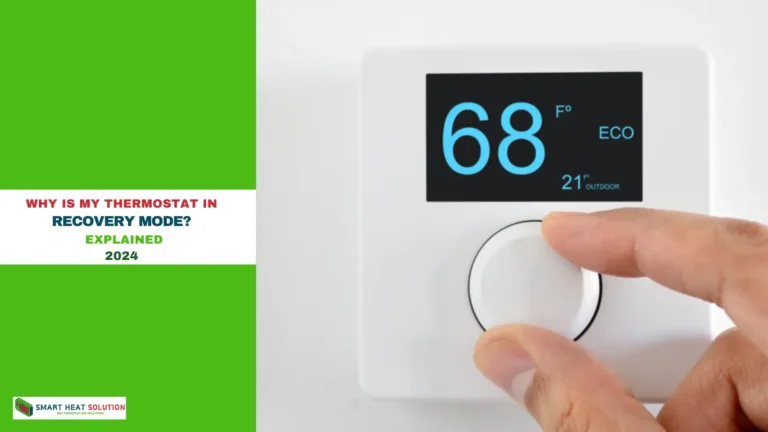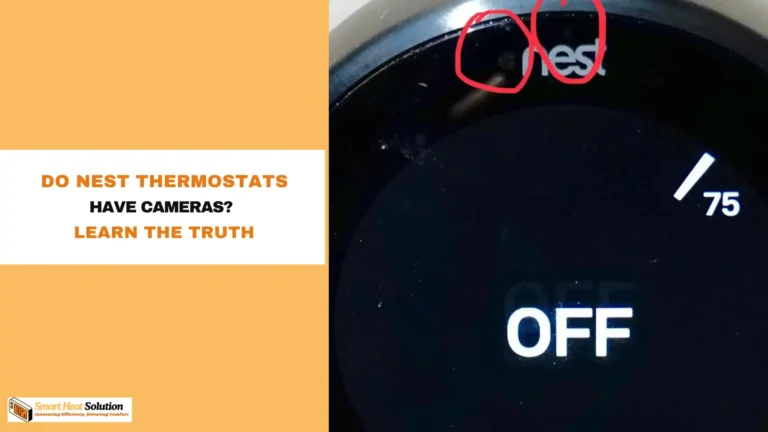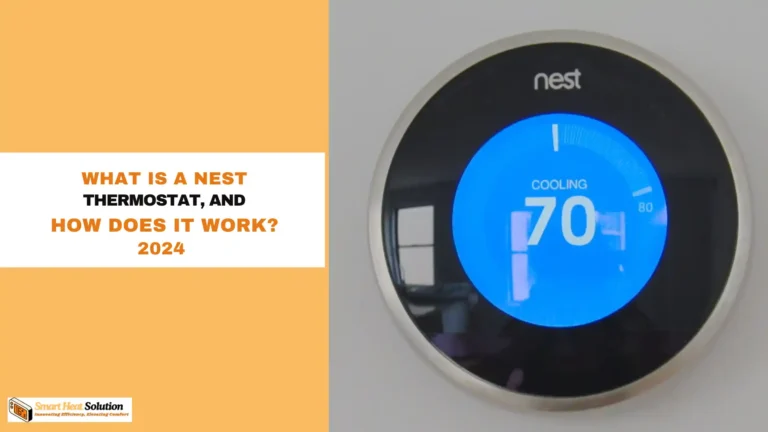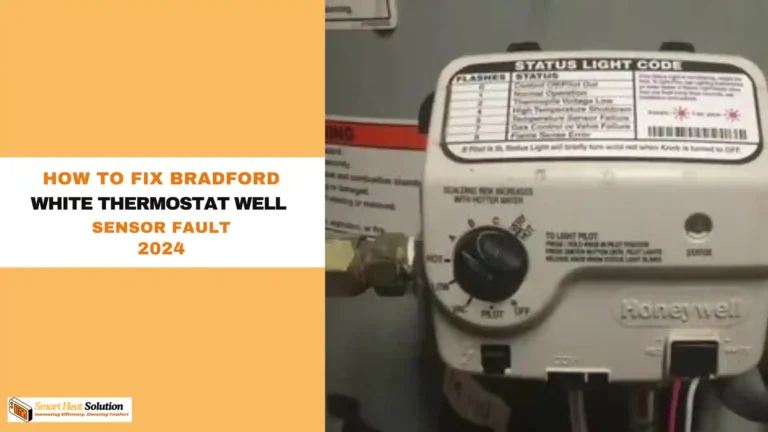AC Won’t Go Below 74 (Solved) 2024
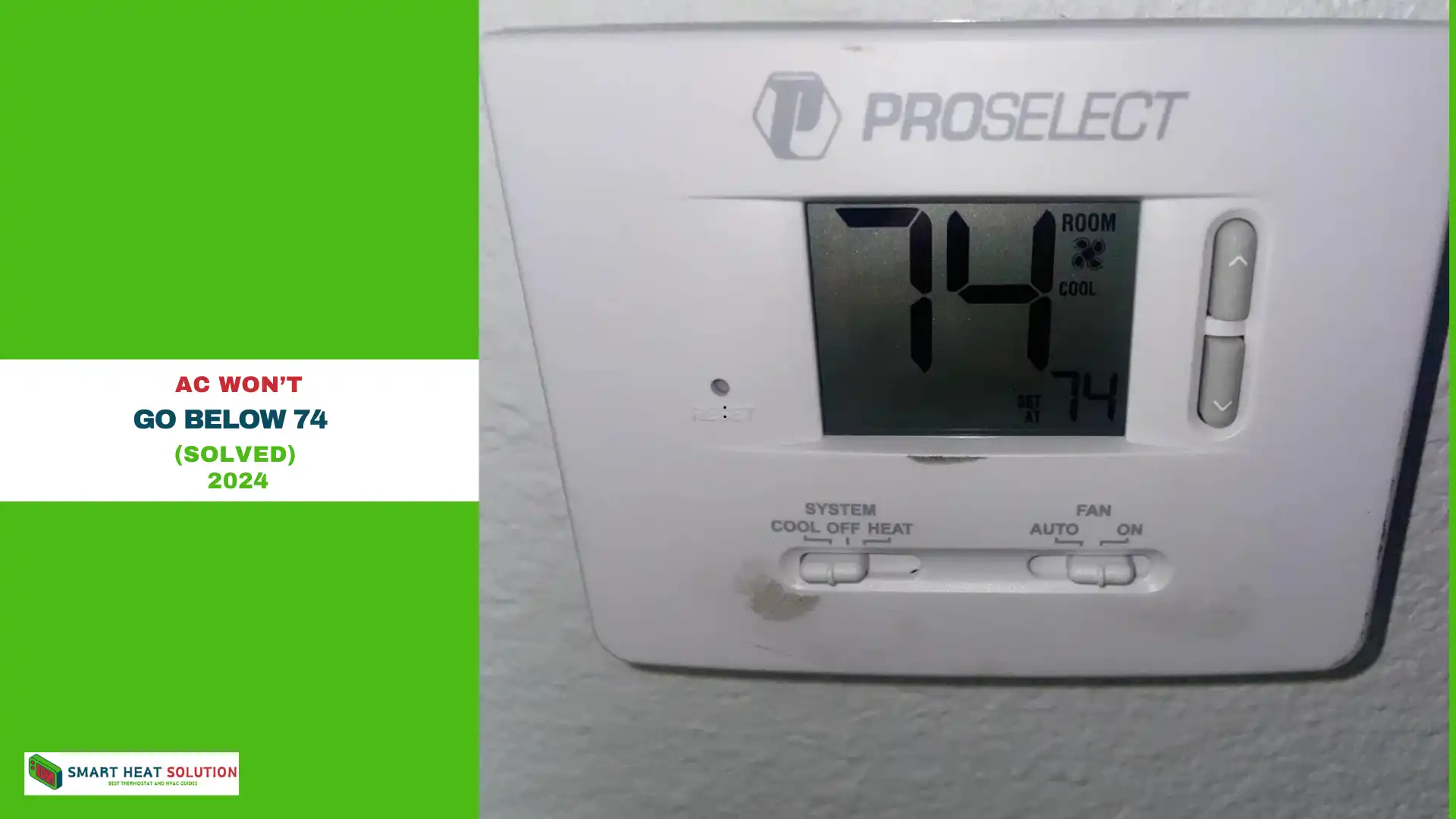
Air conditioners are meant to keep our homes comfortable, but sometimes they struggle to cool below a specific temperature, like 78°F.
If you’re finding that your AC won’t go below 78°F (or even 75°F), you’re not alone. Several factors can cause this issue, from thermostat settings to clogged filters.
Here, we’ll break down each potential problem and give you solutions to get your AC working as it should.
Understanding AC Temperature Settings
Let’s take a closer look at how AC temperature settings work and why your AC might not go below 74 degrees Fahrenheit.
How AC Temperature Settings Work
Your AC’s thermostat lets you set the temperature you want in your home. Modern air conditioners are designed to keep that temperature by adjusting the cooling process as needed.
Ideal Home Temperature Settings
Before you try to fix any issues, it’s important to know the ideal temperature range for comfort and energy efficiency.
For most homes, setting the thermostat between 72-78 degrees Fahrenheit is best. This range can vary depending on your personal preferences and the outside weather.
Common Causes of AC Won’t Go Below 74 And Solutions
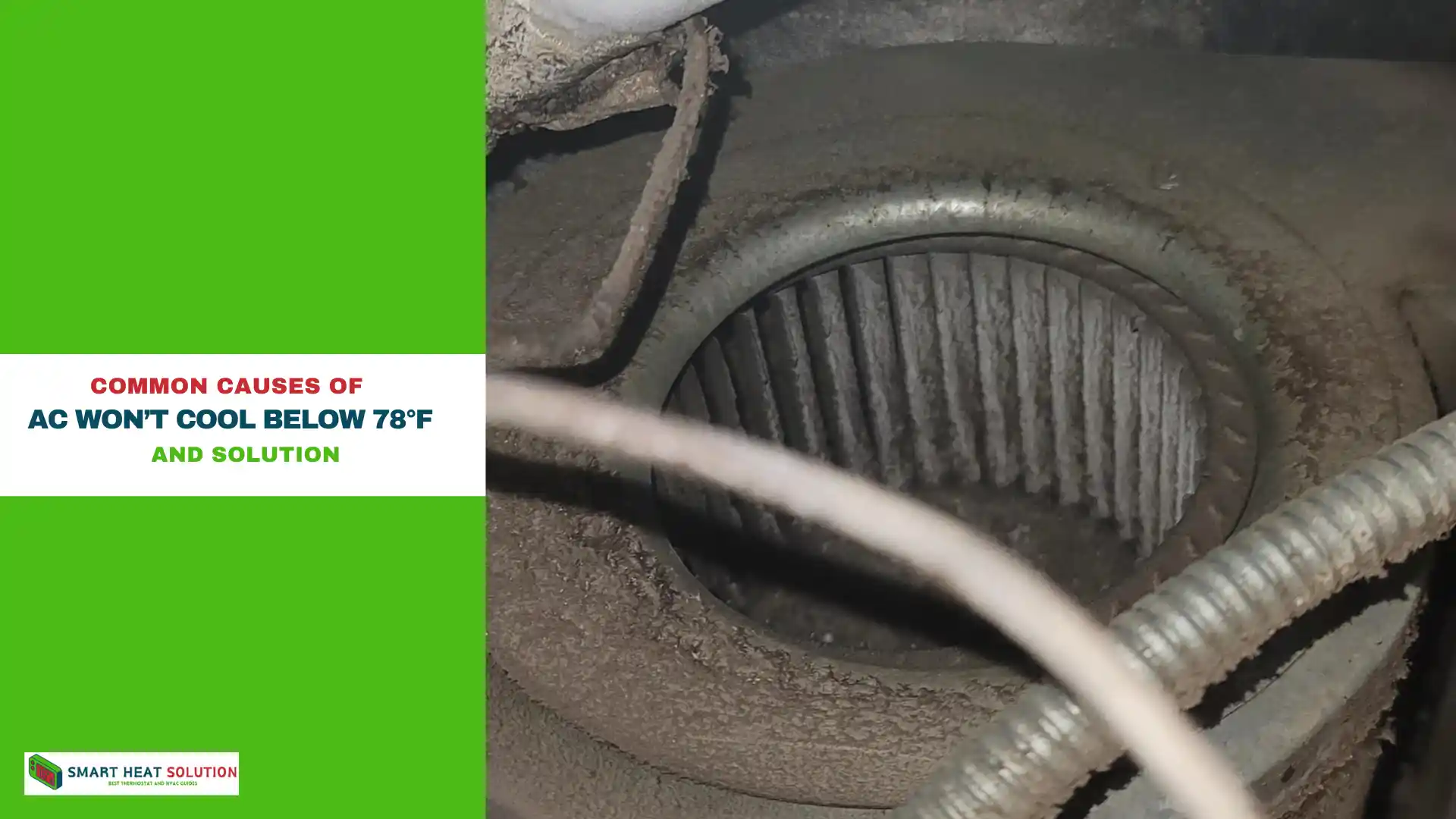
| Problem | Solution |
|---|---|
| Thermostat settings | Set the thermostat to “Cool” mode |
| Air-to-air exchanger is on | Turn off the air-to-air exchanger |
| Dirty air filters | Replace or clean the filter |
| Leaky ductwork | Seal the leaks in duct joints |
| Excessive outdoor temperature | Minimize indoor heat sources |
| Leaky refrigerant | Call a professional for repairs |
| Blocked condenser unit | Clean the condenser coils |
1. Check Thermostat Settings
If you’re using a heat pump, ensure it’s set to the “Cool” mode. Heat pumps have a reversing valve that switches between cooling and heating functions, and incorrect settings can prevent effective cooling.
Solution:
Navigate to the O/B settings on your thermostat, especially if using a smart thermostat like a Nest. Toggle between settings and check if cooler air flows from the vents. Ensure the thermostat mode is set to “Cool.” If this doesn’t work, you may need to check if an air-to-air exchanger is also on.
2. Air-to-Air Exchanger is On
In some homes, an air-to-air exchanger is installed to improve indoor air quality by circulating fresh air. However, in summer, it can disrupt cooling by pulling in warm air from outside.
Solution:
Turn off the air-to-air exchanger when running your AC. Unplugging it from the socket will prevent it from interfering with your cooling, especially on hot days.
3. Dirty Air Filters
Dirty filters restrict airflow, forcing your AC to work harder and reducing its cooling capacity. Filters should be regularly cleaned or replaced to maintain optimal performance.
Solution:
Replace or clean air filters every 1–2 months, depending on usage and manufacturer recommendations. Many modern systems include filter-change indicators to alert you when maintenance is needed. Clean filters ensure maximum airflow and help your AC cool more efficiently.
4. Leaky Ductwork
Leaky ducts allow cooled air to escape before it reaches your living spaces, which can prevent the temperature from dropping to your desired level.
Solution:
Inspect your ductwork, especially the joints, for leaks. Seal any visible leaks with duct sealant or hire a professional for a thorough inspection. Properly sealed ducts improve your AC’s efficiency and can help it cool your home more effectively.
5. Excessive Outdoor Temperature
High outdoor temperatures can affect your AC’s ability to cool below a certain point. Most air conditioners are designed to reduce indoor temperatures by about 20°F below outdoor temperatures. So, if it’s 95°F outside, reaching 75°F inside may be the limit.
Solution:
If the outdoor temperature is extreme, try these methods to ease the burden on your AC:
- Turn off heat-generating appliances like ovens and stoves.
- Close windows and doors to keep hot air from entering.
- Limit appliance use and cook outside if possible on very hot days.
6. Leaky Refrigerant
Refrigerant leaks reduce the cooling efficiency of your AC. If refrigerant levels are too low, your unit may not be able to reach set temperatures, and over time, cooling may stop altogether.
Solution:
Call a licensed HVAC professional to detect and repair refrigerant leaks. They can recharge the system with the correct amount of refrigerant and ensure no further leaks are present. Attempting to handle refrigerant on your own can be hazardous and may void warranties.
7. Blocked Condenser Unit
Condenser coils expel hot air from the system, but if they’re dirty or blocked, heat won’t dissipate effectively. Dirt, mud, and debris on the coils block airflow and reduce the AC’s ability to cool.
Solution:
Clean the condenser unit by gently spraying it with water from the inside out. Open the top grill and use a garden hose to clear out any dirt and debris from the coils. Keeping the condenser clean ensures proper airflow and helps your AC cool effectively.
Final Thoughts
These are the primary reasons your AC might not be able to cool below a certain temperature, like 78°F. By identifying and resolving these issues, you can improve your air conditioner’s performance. If you still face issues, it may be time to consult an HVAC technician for a comprehensive check. Regular maintenance and quick fixes can help you stay cool all season long.
FAQS
Why Isn’t My AC Bringing the Temperature Down?
If your AC isn’t cooling the room enough, it could be because of:
Thermostat Issues: Check for incorrect settings or calibration problems.
Airflow Restrictions: Make sure vents are clear and filters are clean.
Insufficient Cooling Capacity: The AC unit may not be big enough for your space.
External Factors: High outdoor temperatures or humidity can reduce cooling efficiency.
Low Refrigerant Levels: Low refrigerant makes the AC less effective and requires professional repair.
Why Won’t My AC Drop Below 75?
If your AC won’t go below 75 degrees, there could be several reasons:
Thermostat Issues: Make sure the thermostat is set correctly and is working properly.
Airflow Restrictions: Check that vents are not blocked and that filters are clean.
Insufficient Cooling Capacity: The AC unit might be too small for the space it’s cooling.
External Factors: High outdoor temperatures or humidity can affect the cooling power.
Low Refrigerant Levels: Low refrigerant reduces cooling efficiency and requires professional repair.
Why Won’t My AC Go Below a Certain Temp?
If your AC won’t cool below a certain temperature, it could be due to:
Thermostat Issues: The settings might be incorrect, or the thermostat may not be calibrated properly.
Airflow Restrictions: Vents might be blocked, or the filters could be dirty.
Insufficient Cooling Capacity: The AC unit might not be large enough for the size of your space.
External Factors: Outdoor heat or high humidity can make it harder for the AC to cool your home.
Refrigerant Problems: Low refrigerant reduces cooling ability and needs professional attention.
Why Won’t My AC Get Colder Than 73?
If your AC won’t get colder than 73 degrees, the issue might be:
Thermostat Issues: Incorrect settings or calibration problems.
Airflow Restrictions: Blocked vents or dirty filters could be limiting airflow.
Insufficient Cooling Capacity: The AC unit might be too small for the space.
External Factors: Hot weather or high humidity outside can affect cooling inside.
Low Refrigerant Levels: Low refrigerant reduces the AC’s cooling power and needs to be fixed by a professional.
More resources: https://florida-academy.edu/common-air-conditioning-issues-florida-how-to-deal/

I’m Alan William’s, the founder of SmartHeatSolution.com. I am from California, USA, I’m passionate about innovative heating technologies and their impact on our homes and businesses. With a background in electrican and home repair , I aim to make smart, energy-efficient heating accessible to everyone. When I’m not writing, I’m likely interested in all the thermostat brands and their new technnology. Thanks for stopping by!

